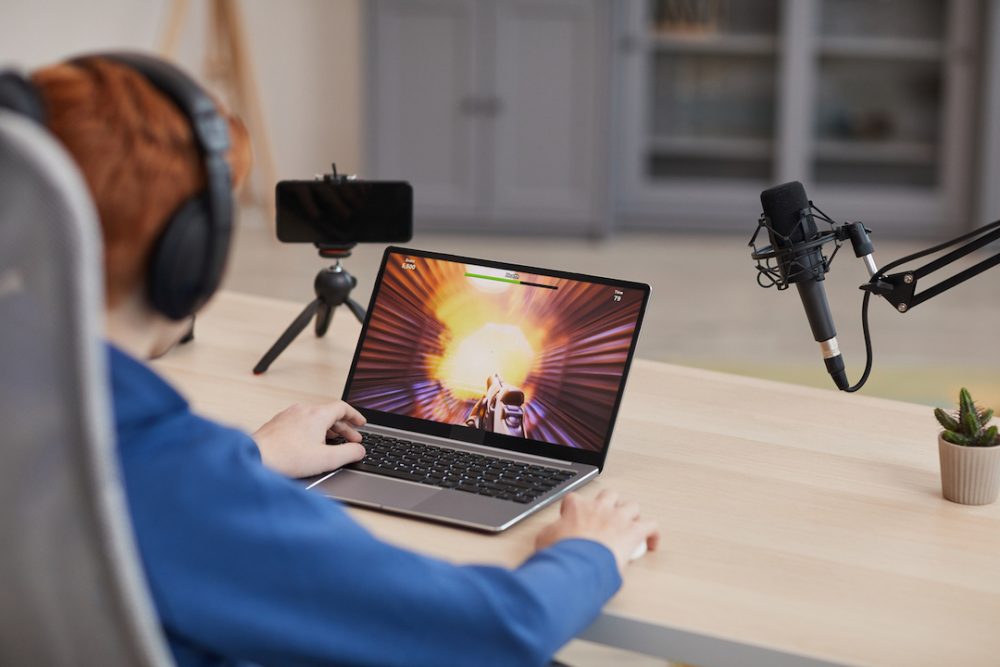The creator economy, defined by CB Insights as “the numerous businesses built by independent creators, from vloggers to influencers to writers, to monetize themselves, their skills, or their creations” is growing rapidly. And, in our increasingly digital society, content creation is shaping how consumers want to market themselves, and how brands want to market to savvy consumers. Consumer electronics are the tools powering this growth, especially in the United States where a hearty entertainment and media industry encompasses film, television, music, and gaming. What consumer electronic device is shared between all of these industries? The microphone.
According to a report from Research and Markets, the global microphone market is expected to grow from $2,454 million in 2023 to $3,526 million by 2028. The CAGR for this forecast period is 7.5 percent, and it is in no small part attributed to the rise of social media and content creation. As more people become content creators, there is a greater need for high-quality audio recording equipment for videos, podcasts, and live streams.
With content being produced in a neverending stream, there seems to be a desire for content creation and technology that can keep up with it.
What to Look For in the Right Microphone for Video Content Creation

Microphones are one of the essential pieces of equipment required for video content creation. Before preparing a pros and cons chart for each microphone, however, ask what type of content you are looking to make. Different types of microphones are suited for specific use cases, environments, and situations. A live performance microphone will not necessarily work for a podcast.
Once you have come to the conclusion of which kind of content you are looking to create, you must do some research on the microphone that would best fit your goals. Sound Guys outlines five types of microphones that are particularly well-suited for content creation:
- Dynamic: Picture a microphone in your mind. The image that appears is probably a dynamic microphone, which is most often seen being used by performers on stage or in recording studios. According to Sound Guys, their sound is generated by a magnetic field inside a coil of wire attached to a sensitive diaphragm that, when moved by soundwaves, spurs the coil to convert “the movement into an electrical signal that can be recorded.” The durability of the magnets and coils of wire inside dynamic microphones make them especially useful in noisy environments like live performances and interviews on the street. However, they are incredibly versatile in a number of recording situations.
- Condenser: These microphones are much more sensitive to smaller vibrations than dynamic microphones thanks to their use of capacitor plates instead of coil and magnets. Their preciseness and sensitivity make them particularly apt to pick up “the subtleties in a voice.” All you podcasters out there: the condenser microphone is probably the one for you.
- Ribbon: They do not come wrapped in a bow, but they do have a knack for recording multiple audio sources simultaneously because of their bidirectional polar pattern. Sound Guys designates ribbon microphones as “technically a sub-type of the dynamic mic category,” but they have actually been around much longer than dynamic microphones. Sweetwater states that ribbon microphones hit the stage in the 1920s as one of the only microphone options available and became used extensively in broadcasting. It is called the ribbon microphone because it houses a ribbon that “rests between two electromagnetic poles” that respond to a sound source, according to Sound Guys.
- USB: Cheap and easy to use, USB microphones are a go-to for the content creator who is just starting out. As the name suggests, these microphones have a USB output that can connect directly to a computer via a USB port. They have a built-in analog-to-digital converter (ADC). These microphones are also well-suited for podcasts, but also any content involving voiceovers. However, their built-in ADC makes them largely one-size-fits-all, which may not be what you are looking for.
- XLR: These microphones are pricier, but are worth the investment if you are looking for a microphone that provides a balanced signal. XLR stands for X connector, Locking connector, Rubber boot. Due to its lack of an ADC, it has the ability to “reject noise induced in the cable connecting it to the recording equipment,” according to Sound Guys.
As the creative economy expands rapidly, the consumer electronics propelling it are too. With audio/video content being a lucrative form of content and more people turning toward content creation as a career, consumer electronics and audio equipment like microphones will continue to be bought in droves. Picking the right one involves careful consideration and research that might just make your brand a part of the latest TikTok trend.















